
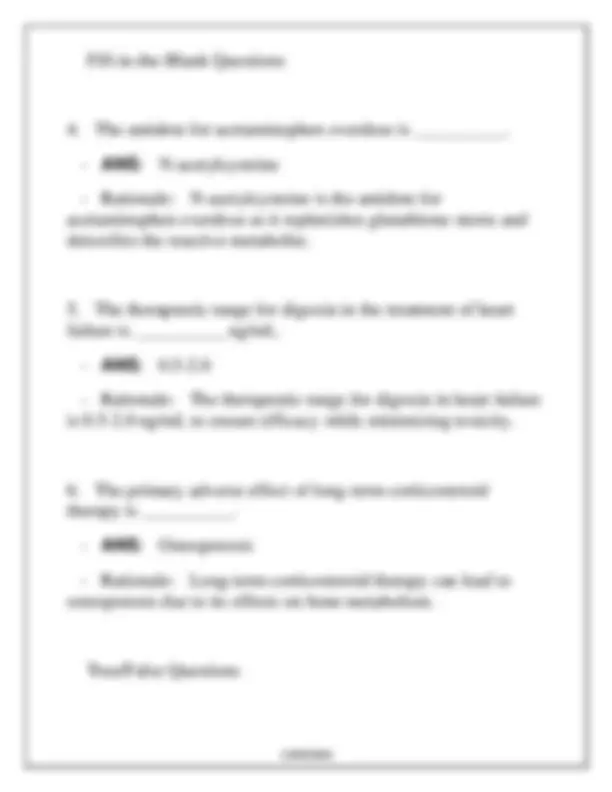
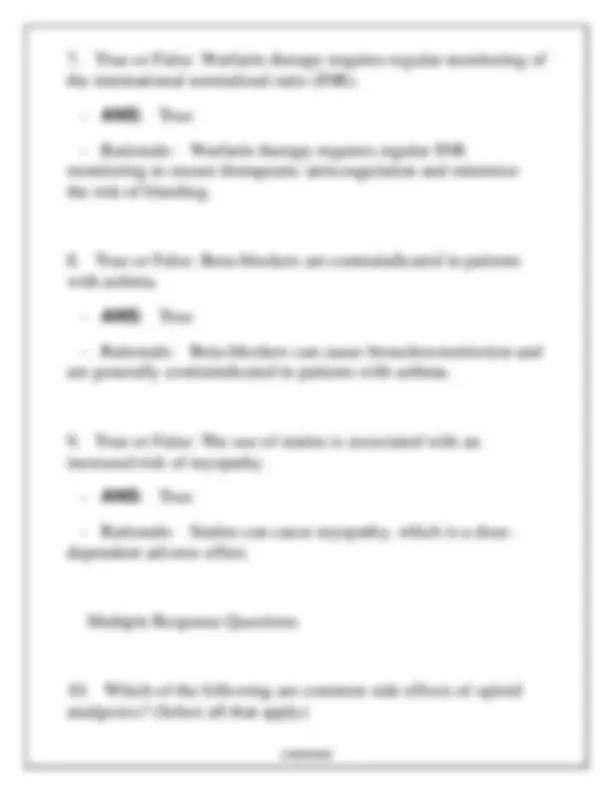
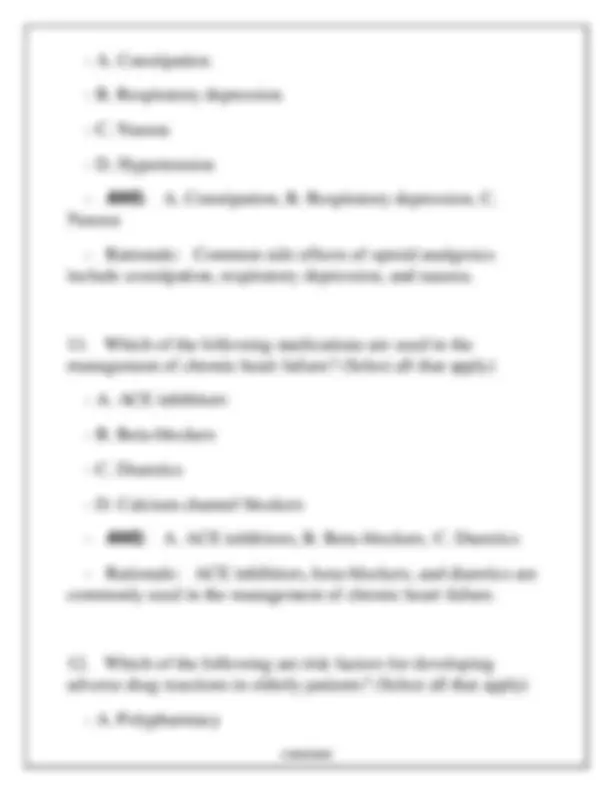
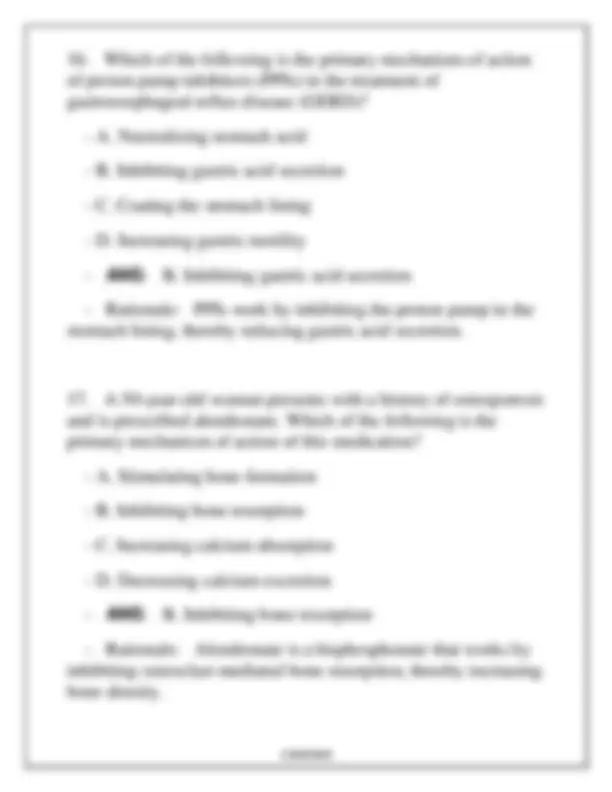
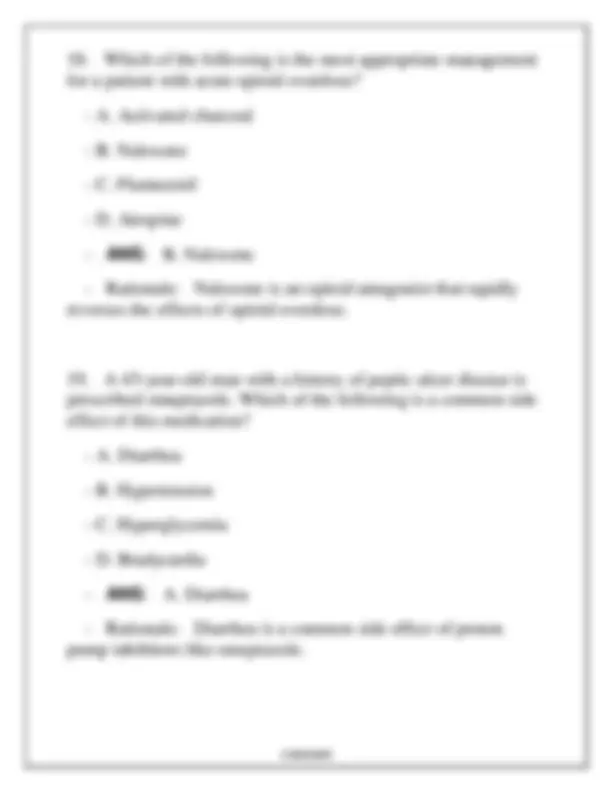
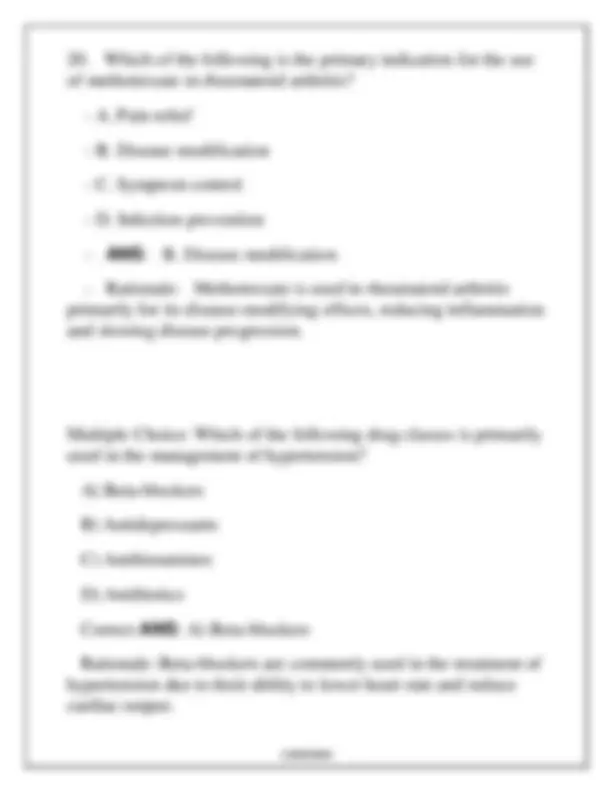
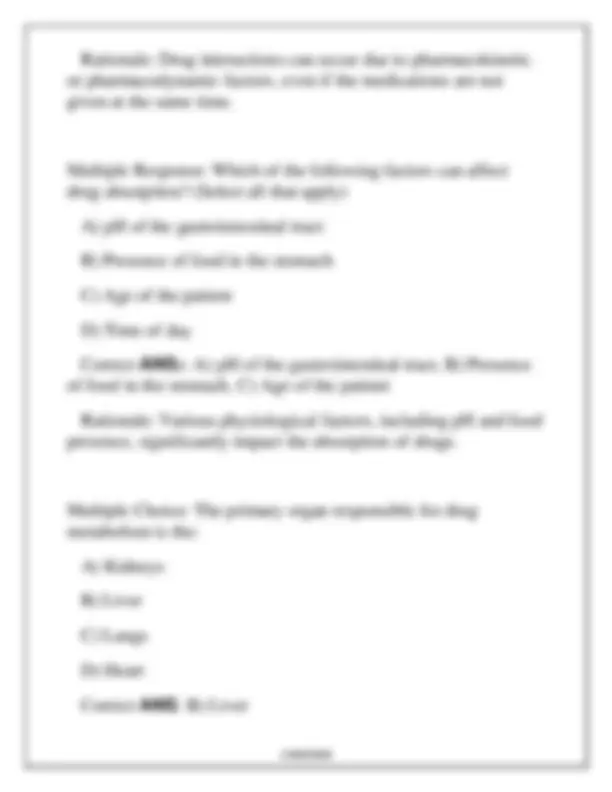
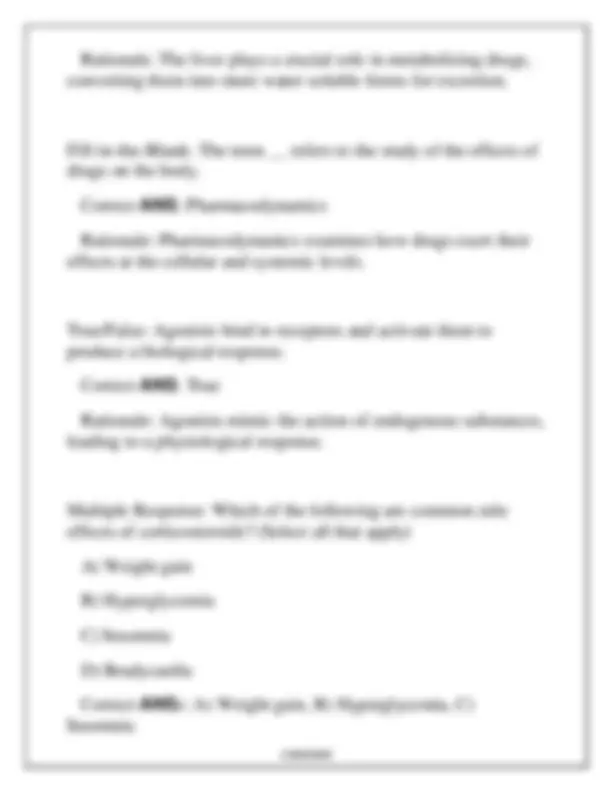
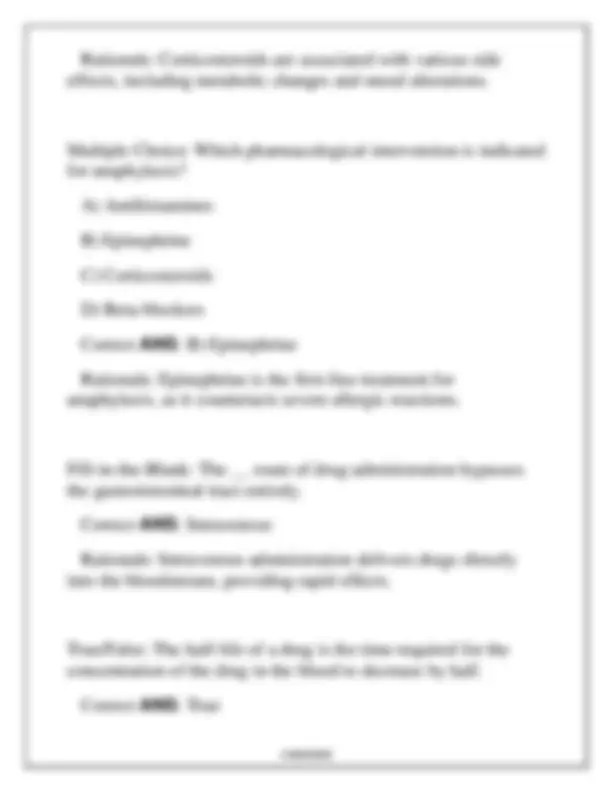



Study with the several resources on Docsity

Earn points by helping other students or get them with a premium plan


Prepare for your exams
Study with the several resources on Docsity

Earn points to download
Earn points by helping other students or get them with a premium plan
Community
Ask the community for help and clear up your study doubts
Discover the best universities in your country according to Docsity users
Free resources
Download our free guides on studying techniques, anxiety management strategies, and thesis advice from Docsity tutors
NU 636 (HU-AGPCNP) Advanced Pharmacology Midterm Exam (Qns & Ans) 2025NU 636 (HU-AGPCNP) Advanced Pharmacology Midterm Exam (Qns & Ans) 2025NU 636 (HU-AGPCNP) Advanced Pharmacology Midterm Exam (Qns & Ans) 2025NU 636 (HU-AGPCNP) Advanced Pharmacology Midterm Exam (Qns & Ans) 2025
Typology: Exams
1 / 18

This page cannot be seen from the preview
Don't miss anything!











Fill-in-the-Blank: The primary mechanism of action of ACE inhibitors is the inhibition of the enzyme __. Correct ANS : Angiotensin-converting enzyme Rationale: ACE inhibitors prevent the conversion of angiotensin I to angiotensin II, leading to vasodilation and decreased blood pressure. True/False: The therapeutic index of a drug is defined as the ratio between the toxic dose and the effective dose. Correct ANS : True Rationale: A higher therapeutic index indicates a greater margin of safety for the drug. Multiple Response: Which of the following are characteristics of pharmacokinetics? (Select all that apply) A) Absorption B) Distribution C) Metabolism D) Therapeutic effect Correct ANS s: A) Absorption, B) Distribution, C) Metabolism Rationale: Pharmacokinetics encompasses the processes of absorption, distribution, metabolism, and excretion of drugs.
Rationale: Drug interactions can occur due to pharmacokinetic or pharmacodynamic factors, even if the medications are not given at the same time. Multiple Response: Which of the following factors can affect drug absorption? (Select all that apply) A) pH of the gastrointestinal tract B) Presence of food in the stomach C) Age of the patient D) Time of day Correct ANS s: A) pH of the gastrointestinal tract, B) Presence of food in the stomach, C) Age of the patient Rationale: Various physiological factors, including pH and food presence, significantly impact the absorption of drugs. Multiple Choice: The primary organ responsible for drug metabolism is the: A) Kidneys B) Liver C) Lungs D) Heart Correct ANS : B) Liver
Rationale: The liver plays a crucial role in metabolizing drugs, converting them into more water-soluble forms for excretion. Fill-in-the-Blank: The term __ refers to the study of the effects of drugs on the body. Correct ANS : Pharmacodynamics Rationale: Pharmacodynamics examines how drugs exert their effects at the cellular and systemic levels. True/False: Agonists bind to receptors and activate them to produce a biological response. Correct ANS : True Rationale: Agonists mimic the action of endogenous substances, leading to a physiological response. Multiple Response: Which of the following are common side effects of corticosteroids? (Select all that apply) A) Weight gain B) Hyperglycemia C) Insomnia D) Bradycardia Correct ANS s: A) Weight gain, B) Hyperglycemia, C) Insomnia
Rationale: Half-life is a critical pharmacokinetic parameter that influences dosing schedules. Multiple Response: Which of the following are potential consequences of polypharmacy? (Select all that apply) A) Increased risk of drug interactions B) Enhanced therapeutic effects C) Adverse drug reactions D) Medication non-adherence Correct ANS s: A) Increased risk of drug interactions, C) Adverse drug reactions, D) Medication non-adherence Rationale: Polypharmacy can lead to complex drug regimens, increasing the likelihood of interactions and non-adherence. Multiple Choice: Which class of medications is primarily used in the management of chronic obstructive pulmonary disease (COPD)? A) Anticoagulants B) Bronchodilators C) Antidepressants D) Antipyretics Correct ANS : B) Bronchodilators
Rationale: Bronchodilators are essential for relieving airway obstruction in patients with COPD. Fill-in-the-Blank: The __ effect occurs when a drug is administered for a prolonged period, leading to a decreased response. Correct ANS : Tolerance Rationale: Tolerance develops as the body adjusts to the drug’s effects, often necessitating higher doses to achieve the same therapeutic effect. True/False: Pharmacovigilance refers to the science relating to the detection, assessment, understanding, and prevention of adverse effects of drugs. Correct ANS : True Rationale: Pharmacovigilance is crucial for ensuring drug safety and efficacy post-marketing. Multiple Response: Which of the following are considered contraindications for the use of NSAIDs? (Select all that apply) A) Peptic ulcer disease B) Renal impairment C) Hypertension D) Asthma